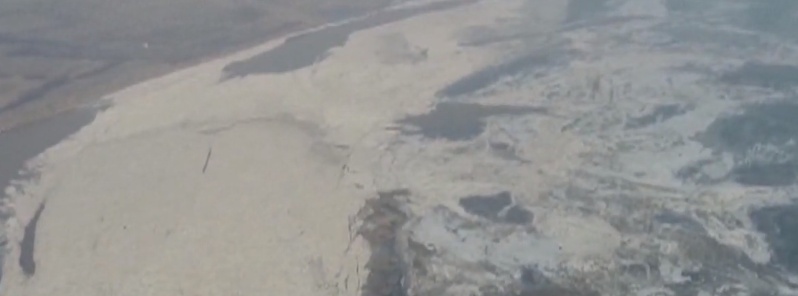660 km (410 miles) of China’s Yellow River frozen solid

Local authorities reported that almost 660 km (410 miles) of China's Yellow River is frozen solid as of January 3, 2020, due to cold temperatures sweeping from north to south. The Yellow River's flood control headquarters announced that the river entered its 2019/20 frozen period on December 6, 2019, at 02:00 UTC (10:00 LT).
The meteorological and hydrology departments in the region, as well as local authorities along the river, have started taking precautionary measures against ice-jam flooding and dam breaches.
Ice jams can lead to localized and regional flooding in the area behind the blockage, and the sudden failure of an ice jam can release large quantities of water and ice that may cause damage to nearby structures, croplands, and wildlife habitat downstream.

In March 2014, the Chinese military was deployed on a remote part of the Yellow River to drop bombs on the frozen river to free up the flow as a proactive measure. Authorities were worried that as the weather got warmer, ice would melt, likely leading to flooding.
Tourists marveled at a rainbow arched over the frozen Hukou Waterfall of the Yellow River in China, among frozen banks and icicles, creating a beautiful winter scene. https://t.co/DbV3I5D5dl pic.twitter.com/DyOsPr84aH
— ABC News (@ABC) January 2, 2020
On January 1, 2020, as the temperature continued to drop, the #HukouWaterfall of the Yellow River formed a unique “ice waterfall jade pot” landscape at a grand canyon in North #China's Shanxi province. #newyear2020 pic.twitter.com/LJzEenSaSY
— ShanghaiEye (@ShanghaiEye) January 5, 2020
Ice slush appeared in the Yellow River from Hukou section to Yumenkou section, N China's Shanxi province, as there has been a severe temperature drop in the area recently. pic.twitter.com/N4eSLgqwRr
— People's Daily, China (@PDChina) January 5, 2020
The Yellow River or Huang He is 5 464 km (3 395 miles) long, making it the second-longest river in China. The Yangtze River holds the record at 6 300 km (3 915 miles). The
The river rises in the northwestern province of Qinghai and runs through nine provinces and autonomous regions in western, central, northern, and eastern China.
Featured image credit: CCTV

Commenting rules and guidelines
We value the thoughts and opinions of our readers and welcome healthy discussions on our website. In order to maintain a respectful and positive community, we ask that all commenters follow these rules.